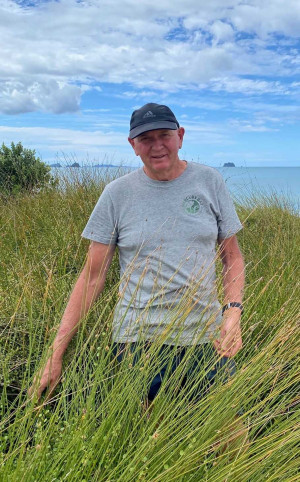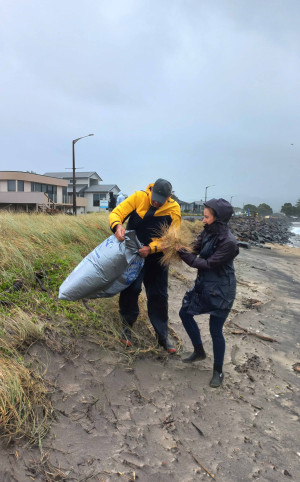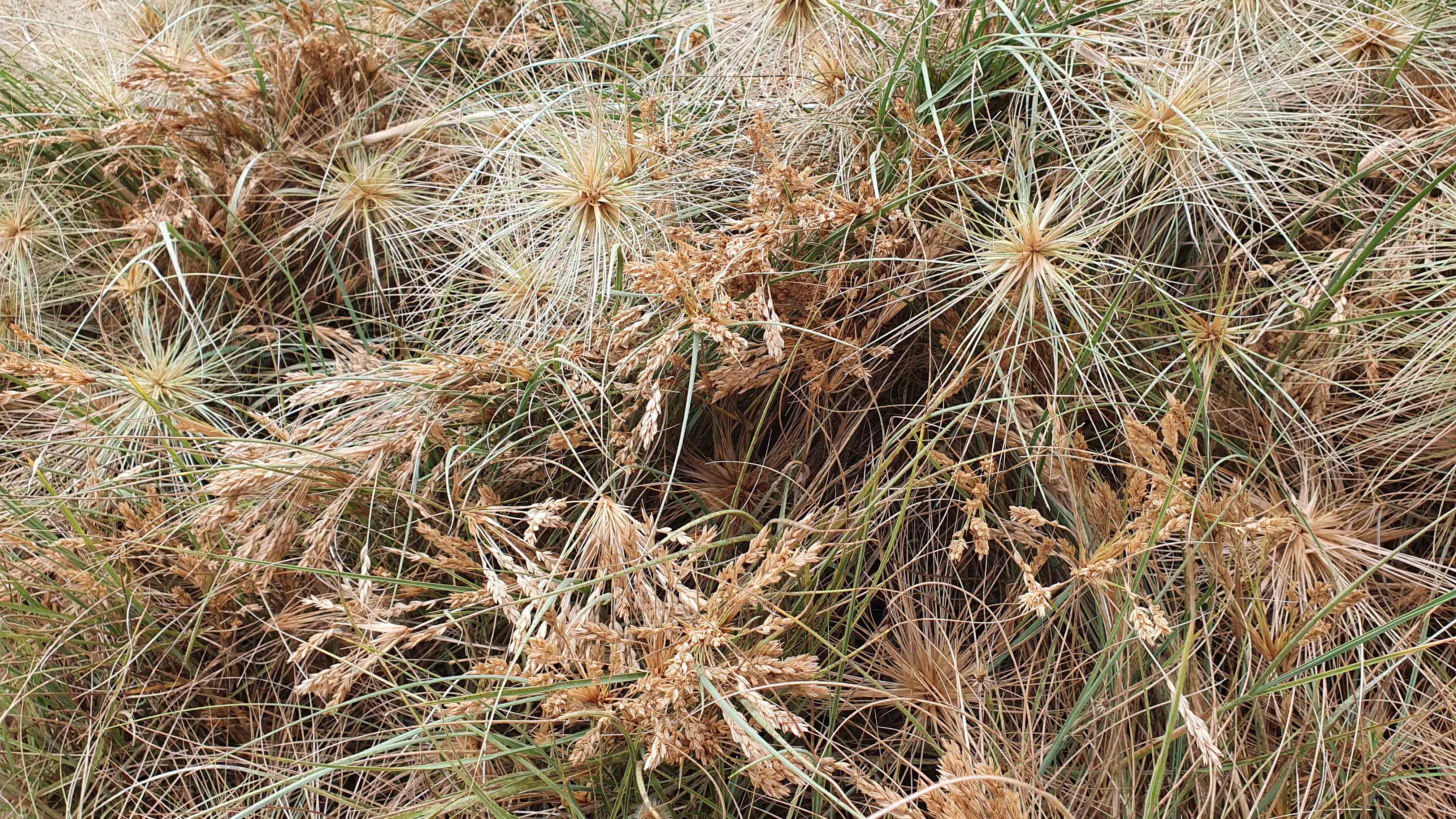“After a storm, spinifex would naturally walk backward and sends runners inland to re-establish further up dune ... that was before coastal squeeze interfered with this process and now we can’t just leave them to it.”
– Kim Lawry, Project Manager of Mercury Bay Environmental Trust.

Kim Lawry, Project Manager of Mercury Bay Environmental Trust.
The resilience of dunes and the sustainability of the sand-binding kōwhangatara/spinifex is being keenly felt by Coastcare groups in the eastern Coromandel Peninsula following Cyclone Hale.
“Summer offers a small window of opportunity to collect the seeds of the native dune grass from which the following year’s plantings are grown,” says Kim Lawry, Project Manager of Mercury Bay Environmental Trust.
But with many of the seedheads swept away in Cyclone Hale's fury, Coastcare groups from Whangapoua, Matarangi, Kūaotunu, Ōpito Bay, Wharekaho, Buffalo Beach, Onemana and Whangamatā “weren’t able to get as many as we’d like” this year.
Collecting seedheads has become an important part in the process of dune restoration, says Kim.
Kōwhangatara is the main dune forming indigenous plant in New Zealand.
"Historically, spinifex didn’t reproduce by seed. They didn’t need our help at all.
“Instead, they survived the dynamic seafront through a cycle involving retreating inland and advancing back toward the water.
“After a storm, spinifex would naturally walk backward and sends runners inland to re-establish further up dune ... that was before coastal squeeze interfered with this process and now we can’t just leave them to it. On many of our beaches, spinifex has limited space to retreat inland. We don’t have enough room between the shoreline and the houses and roads.”

Coastcare volunteers collect spinifex seedheads at Buffalo Beach.
Collected seedheads are instead sent every year to Coastlands Plant Nursery in Whakatane for germination and growth.
“The window of opportunity to pick is small – you have to pick plants at the time the plants are releasing.” says Kim.
“We go in and tickle under the heads and when they pop off we take them. If you pick before the seeds are mature, then the germination rate is lower.”
He says another issue threatening kōwhangatara supply is the difficulty of growing the plants and that there is no financial return for all the hard mahi.
“It gives commercial nurseries no incentive to assist in spinifex supply.
“Growing the plants is a labour intensive process. After manually extracting seeds from the heads, each one has to be squeezed to check its viable.
“In the past, we could keep up with demands, but the more we’ve learnt about how important spinifex is, the more our demand has increased.
“This problem of not enough spinifex … I was at a conference and spoke about this. The people that came up to talk to me afterward all had the same problem.”
Achieving the quantity of plantings outlined in Thames-Coromandel District Council’s (TCDC) Shoreline Management Plan for 2024 would require a tenfold increase in the usual annual order of kōwhangatara, alone.
It doesn’t help that the average number of viable seeds per head has gone down considerably over the past years. Kim believes this could be due to climate change. “The prevailing winds we’re getting now may not allow for pollination to happen as it should.”
Innovation in growing spinifex is required to ensure its sustainability.
“The idea for a nursery in Whitianga has been raised though it would require a purpose-built nursery that supports the narrow temperature ranges required for spring germination.
“We need to talk to universities to find a better way to grow spinifex that is more efficient and less labour intensive.
“Ultimately, resilience of dunes is our main aim and that won’t happen if we give up because of setbacks.
“Storm damage from time to time is expected. If a few trees fall down you don’t give up on a forest. So long as are there are plants left behind, restoration can still happen.”
Coastcare groups are involved in caring for beaches around the Waikato region. Coastcare is a partnership between the local community, iwi, district councils, Waikato Regional Council and the Department of Conservation. There are currently community Coastcare groups working at 24 beaches on the east and west coasts of the Waikato region.

